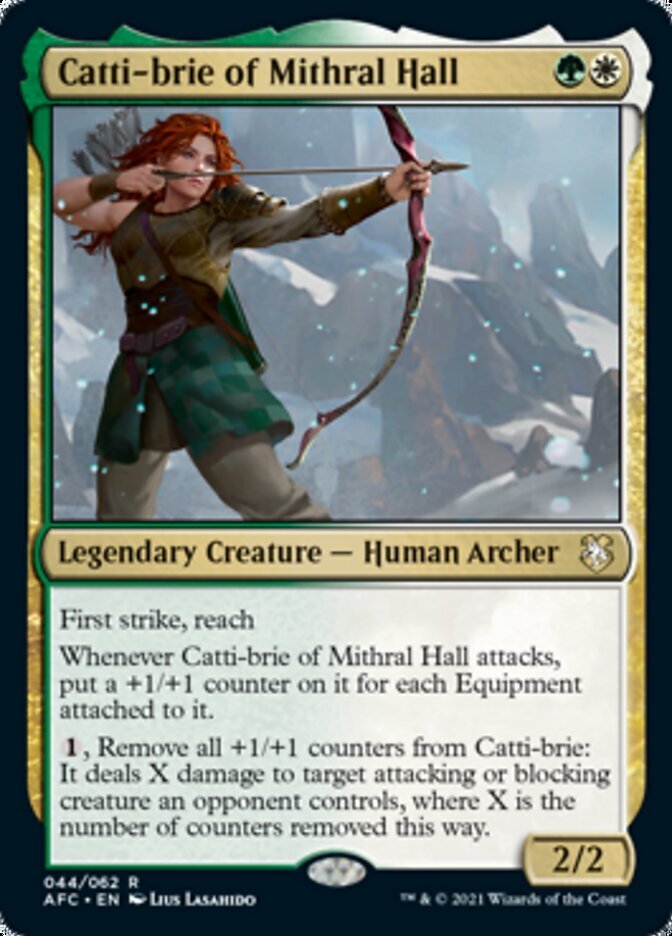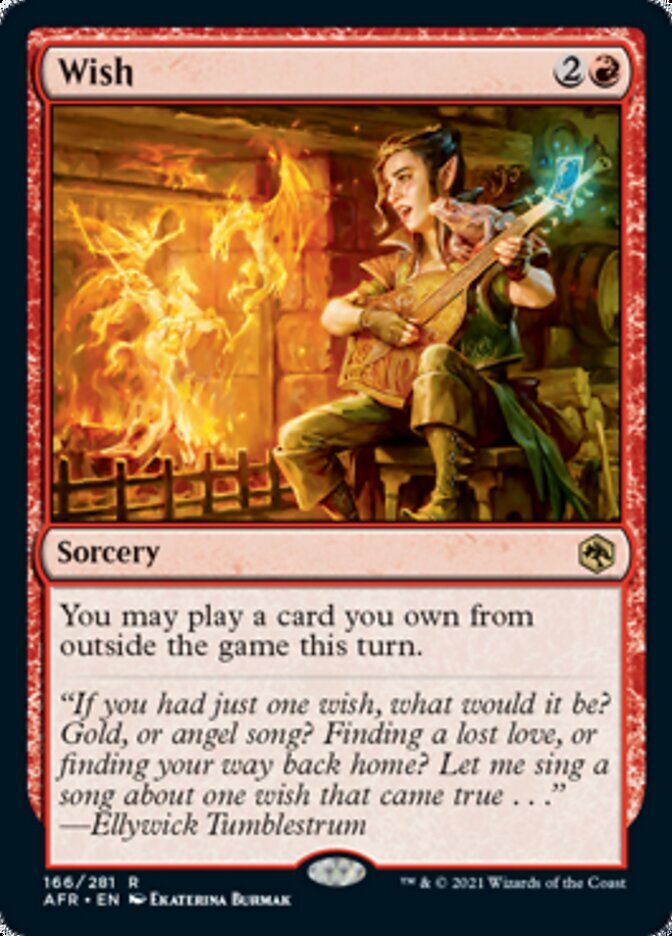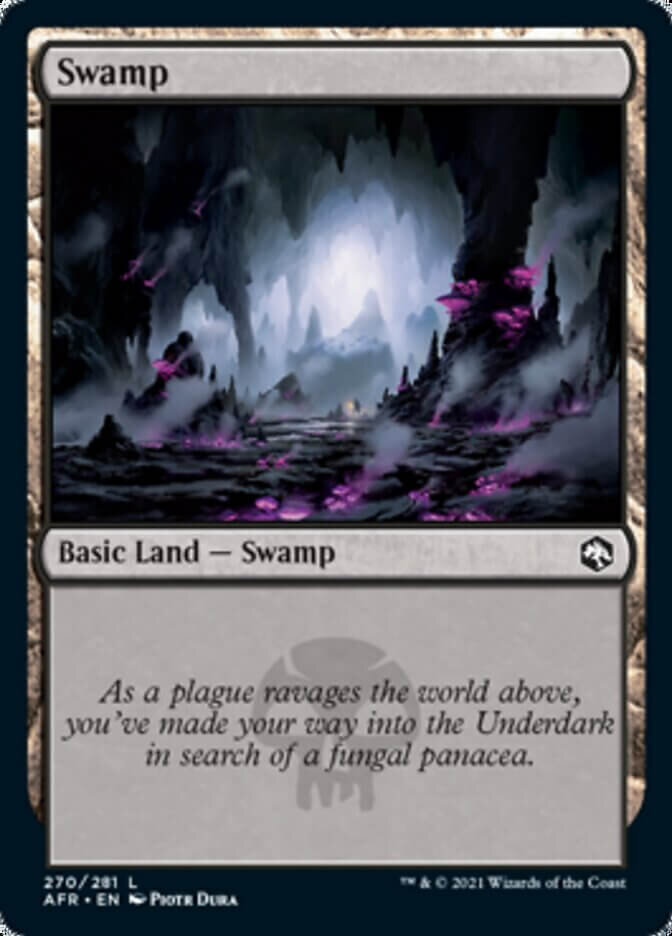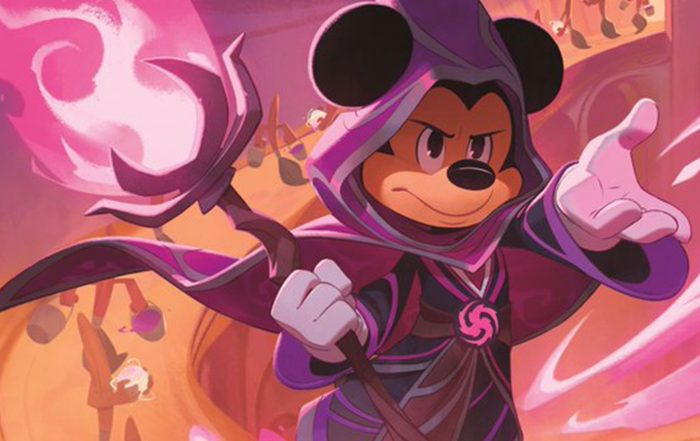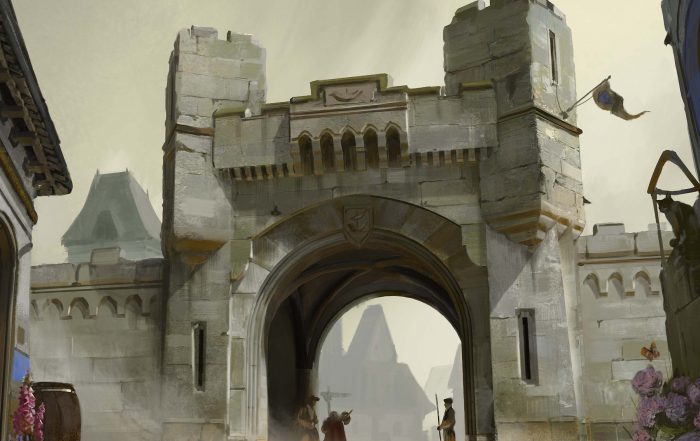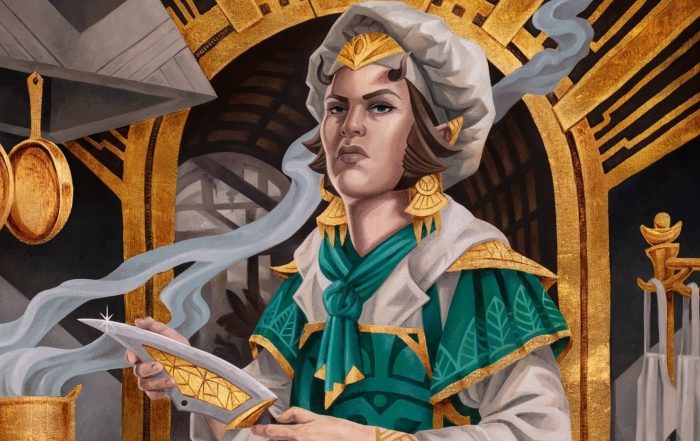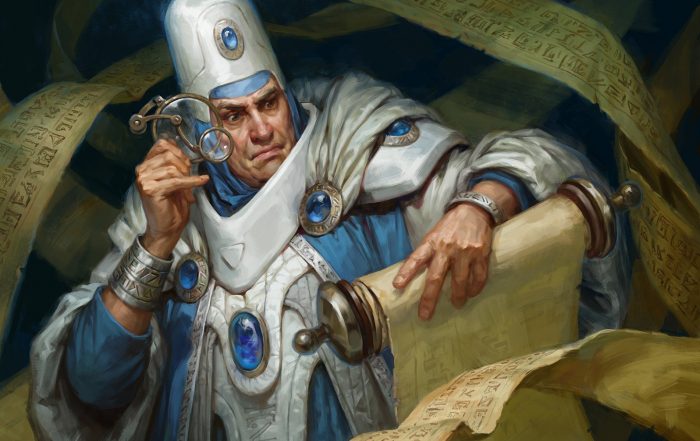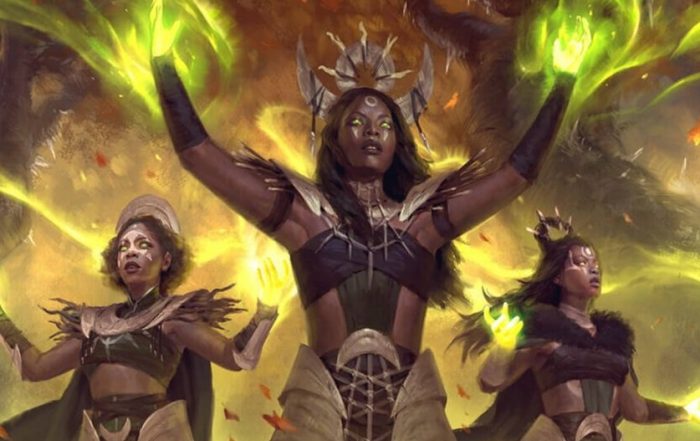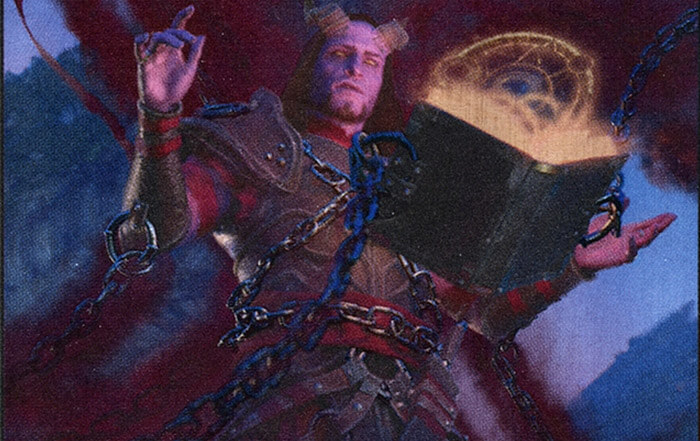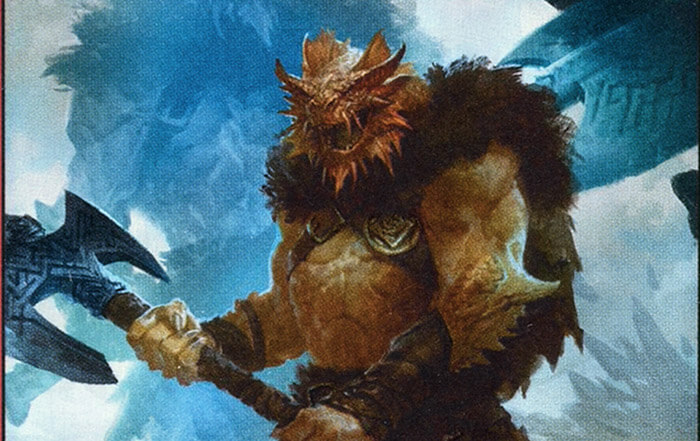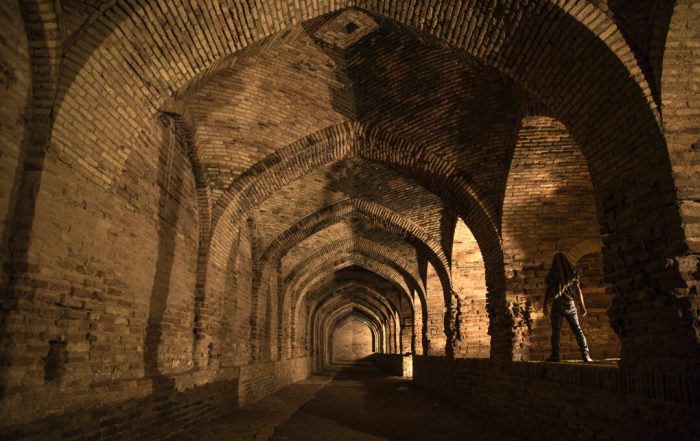Magic goes Dungeons&Dragons
Adventures in the Forgotten Realms – A role-players take
Author: David Merker-Schwendinger
As you push open a heavy wooden door with your combined strength, you are met by stale, musty air. The little light provided by Fibblestip’s torch casts ghostly shadows on the room before you.
On the walls you recognise old, fading frescoes. You can hardly believe your eyes as you recognise heroes on the wall opposite to you whom about you have only heard stories: Drizzt Do’Urden, Bruenor Battlehammer, Wulfgar and Cattie-Brie.
Could it be that you have found an old hero’s place outside the Icewind Valley? A noise makes you spin around as grinding of steel on stone sounds from the passage you just came from. A symbol begins to glow on the ceiling: an octagonal metal star, its corners connected by a net.
You realise that you have walked straight into the trap of Lolth, the dark spider deity. A final prayer to Bahamut comes silently from Erwen’s lips as Alphandria creates a fireball in front of her with a flowing wave of her hand.
The first MTG World Crossover is here
Some time ago, Wizards of the Coast made the official announcement that many role-play game fans have been waiting for: the creation of a Dungeons&Dragons edition was recently completed and will soon be available in stores. This brings the two biggest brands together that developed under Wizards of the Coast.
Dungeons & Dragons – Adventures in the Forgotten Realms
The new edition has been called Adventures in the Forgotten Realms and refers to one of the most famous settings of the role-playing game, which has become widely known over the years and was created by Ed Greenwood – originally as a bedtime story for his children – in the 1960s.
The Forgotten Realms is one of the best known and most played D&D settings, partly due to the stories of the Icewind-Trilogy by author R. A. Salvatore, which deal with the dark elf Drizzt Do’Urden and the so-called Companions of the Hall. The Forgotten Realms are also the subject of the computer game series about Baldur’s Gate and the events there.
The characters penned by R. A. Salvatore were also some of the first cards to be made public and provided a foretaste of further appearances: Drizzt and his companion Guenhwyvar, Bruenor Battlehammer and the dark spider deity Lolth.
What is Dungeons and Dragons?
After a first joyful look at the cards, I, as a role-playing game fan, asked myself how Wizards had implemented the classic D&D elements like known creatures, character development, or so-called “dungeon crawls”. But before we address the crucial question, I would like to start at the beginning and say a few words about Dungeons and Dragons.
This is a classic role-playing game in which the player can slip into the role of a hero of his own choice and imagination, breathe his voice and character into him and immerse himself in a story that is thought up and told by a game master.
They can communicate and act with other players as well as with the so-called “non-player characters”, whose roles are also taken over by the game leader. The goal is to progress through the story to its end, complete various quests and explore the fun-tastic world of the game master. The focus is on enjoying the game and spending time together with friends.
The Rule Book
In the basic rulebook of the Fifth Edition for Dungeons&Dragons, consisting of the triad Player’s Handbook, Game Master’s Handbook and Monster Handbook, on which the new Magic edition is based, there are twelve so-called classes: Barbarian, Bard, Druid, Warlock, Fighter, Cleric, Sorcerer, Monk, Paladin, Rogue, Ranger and Wizard.
All classes differ in skills, style and function within the group. Each player chooses one of these classes at the beginning of the game, depending on the character they want to embody, but can also mix and match several classes as the game progresses.
How do classes work in an MTG setting?
Wizards found an interesting way to implement this first step in role-playing, the so-called Enchantment Class cards.
Each of the classes has one of these enchantments. Most of them are single-coloured, but the bard or the fighter are multicoloured. The way how you level up reminds me a lot of the Sagas. The character development is an important part of D&D. Everyone starts at Level 1, totally inexperienced, and can reach up to Level 20 – an experienced hero who’s able to solve quests with ease.
To reach a new level one has to gain experience points by solving quests, winning fights or simply reaching milestones in the story. To activate another level of these new class cards, you have to pay a cost that can be activated as a sorcery. Each level benefit is added to the previous level and shows the classes progress.
A note worth, that some cards are showing sub-classes of the twelve main classes, i.e. Gloom Stalker; Monk of the Open Hand; Hired Hexblade; Circle of Dreams Druid or Wildmagic Sorcerer. Some cards directly refer to classes, like the Ranger’s Longbow.
Your first steps as a hero
Finally, your character is brought to live by you, and you are eager to start your first adventure. What would be more fitting than exploring a long-forgotten dungeon? Maybe even one that is full of Goblins, Orcs or even worse creatures? The game designers did a great job by bringing a new type of card to the game. Dungeons!
THE DUNGEONS IN ADVENTURES IN THE FORGOTTEN REALMS
There are currently three dungeon cards. The names of these cards are taken from three adventures for the Fifth Edition.
- The Lost Mine of Phandelver aims to introduce the new player to the system and corresponds to the starter set of D&D 5e.
- The Tomb of Annihilation is a stand-alone adventure set on the island of Chult.
- The same is true for the Dungeon of the Mad Mage, which is set in the city of Waterdeep and has a surprisingly massive structure with many floors.
These represent a game system completely new to Magic, but characteristic of Dungeons and Dragons. Special cards allow the player to enter dungeons in some situations, or to advance further in them if they are already there.
The three dungeons reflect different abilities that are useful depending on the player’s preference. What they have in common is that you start in a single room, and from there you can choose from several options to explore further areas. Such a situation also occurs in role-playing, when a room has several exits between which the players must choose. As soon as one of these doors is pushed open, another may close forever, concealing what lies beyond.
What would be a dungeon without monsters?
Of course, a dungeon cannot be without monsters, otherwise it would only be half the fun. Wizards attempted to depict some of the best-known monsters from the Dungeons and Dragons multiverse as creatures, including Beholders, Dragons, Mind Flayers, Hobgoblins, Orcs or Ogres. The Owlbear, whose true origins will always remain a mystery, and the legendary Tarrasque, a city-devouring beast, are also not to be missed.
In addition to the aforementioned Companions of the Hall (which are completed with the Commander Decks: Wulfgar and Cattie Brie), other legendary creatures can also be found in the set.
Examples are Xanathar (from whose point of view the work “Xanathar’s Guide to Everything” was written); Mordenkainen, the well-known wizard who was originally a game character of Gary Gygax, one of the developers of Dungeons and Dragons, and wrote “Mordenkainen’s Tome of Foes”; Tiamat and Bahamut, dragon deities or Volothamp Geddarm, or Volo for short, a mysterious and legendary wanderer from whose point of view “Volo’s Guide to Monsters” was written, but also Farideh, the Warlock.
Do the cards match up with the originals?
The abilities these creature cards carry are closely linked to the background they bring from their own world. The Beholder, for example, is a monstrosity, its eyes perched at the end of twitching tentacles, through them no movement of its victims escapes this repulsive abomination. These provide the creature with a number of opportunities to shoot rays at the heroes. Two of these rays are included with the creature card, which the player can choose between when it is played.
Other creatures, such as the Prosperous Innkeeper, are more broadly linked to the role-playing game. After long treks from town to town, or exploring the surrounding terrain, the heroes usually stop at taverns in the evening to dine and rest.
Disappointing translation of some characters
From a personal point of view, some of the cards in the background seem rather weak, for example Orcus, Prince of the Undead, also known as the Blood Lord. In the Forgotten Realms universe, he rules the city of Naraty in the plane of Thanatos in the Abyss (a counterpart of Hell – here a distinction is made between Hell and the Abyss, an ordered and a chaotic plane) and has a challenge rating of 26.
He therefore can only be defeated by a very experienced group of adventurers at a high, if not the highest, level. He is also in possession of a legendary magical object, the Staff of Orcus, which enhances his powers. With this, Orcus can summon undead creatures out of thin air and bring some of the most powerful destruction spells upon players, or increase their vulnerability to necrotic damage.
The creature card, on the other hand, with cost X2BR, gives the player two options: give all other creatures -X/-X and lose X life, or put X creatures with a mana value of X or less into play from the graveyard. These are based on the original abilities I just mentioned. Considering that the player might have enough mana in their pool, these abilities can proof useful in the right situation, but otherwise seem half-hearted to me.
It is also surprising that Orcus as an almost-deity, Asmodeus as a supreme devil or Tiamat as a true deity do not appear as planeswalkers, while their counterparts Zariel, a war goddess, Lolth, deity of the dark elves or Bahamut, another dragon deity do. In the role-playing game, these creatures are usually only alluded to as mentors or deities, for example, when one encounters their servants or temples.
The Spells
- In order to win a battle, some classes in the Multiverse have access to spells, while others have access to special abilities. Many of the newly released Sorceries and Instants are named after them, for example Burning Hands, Teleportation Circle, Magic Missile, or Power Word Kill.
- The latter has an obvious resemblance to the spontaneous spell Terror, although here the restriction “non-artifact, non-black creature” no longer exists. In role-playing, however, Word of Power is one of the strongest spells that can only be cast at a high spell level (level nine). “You utter a word of power that can compel one creature you can see within range to die instantly. If the creature you choose has 100 hit points or fewer, it dies.” (PHB, 267).
- The spell Magic Missile, which is a fixed hit on an opponent in the role-playing game (e.g. without having to roll the dice), has been adopted as a card in an almost similar way: not counterable and three points of damage, which can be divided between one and three targets.
- The spell Wish, which has been given 2R here, gives a player the ability to “play a card from outside the game that is in their possession” (!). This is as overly powerful and game-breaking as the eponymous sorcery, the ” mightiest spell a mortal creature can cast”. “By simply speaking aloud, you can alter the very foundations of reality in accord with your desires.” (PHB, 288). It is added that the wish must be formulated as precisely as possible, otherwise something can go wrong. For example, when wishing, “I want to be the most powerful sorcerer in the whole world.”, every magic-knowledgeable creature except the person who formulated this might lose their magic power.
- The greatest success in the D&D system in combat is the so-called Critical Hit (a rolled 20), its counterpart the Critical Fail (a rolled 1). The first one doubles the damage caused by the attack (or the dice rolled for it, depending on the group’s decision) and can in some situations decide on the survival of the group. A red card, the eponymous Critical Hit, implements this principle beautifully, giving a creature double hit until the end of its turn. If the player rolls a W20 and gets a Critical Hit, e.g., a 20, he may return the card from the graveyard to his hand.
The loot: Equipment and Treasures
After the battle has been passed, it is time to loot and search the dungeon and enemies to get better equipment, or wealth to afford it. Some new artifacts have been introduced, including those that have legend status, for example the Eye or the Hand of Vecna.
Some spells let the player create treasure artifacts, which add a nice fluff to the edition, as gold and wealth are a great incentive for many role-playing characters.
Other artifacts are associated with certain mana colours and represent coveted weapons, the +2 Mace being an example. Weapons can be magically strengthened in Dungeons and Dragons and grant the wearer a bonus to the attack and damage rolls they make with that weapon. These increase from +1 to +5, have a corresponding (gold) value and are rarely found. The item has been converted in its MtG form to give the creature +2/+2. Some artifacts are assigned to the different mana colours, thus the uniqueness is given.
Among the colourless artifacts are objects that can be found in the standard equipment of many adventurers: Fifty Feet of Rope (five feet equals 1.5 metres), leather armour, a dagger, greataxe, or thieves’ tools.
But when exploring a dungeon, as probably many role-players have painfully experienced, a trap can be triggered, for example the Spiked Pit Trap. This is a card that has been given the Flash ability so that it can be played immediately.
Another possibility is to encounter a shapeshifter called a Mimic, which disguises itself in the form of a chest to ambush unsuspecting explorers and devours them as soon as they open the chest and look down into the fanged maw instead of sparkling riches. This artifact can be turned into a 3/3 artifact creature for two colourless mana until the end of the turn.
Other powerful artifacts, such as the Bag of Holding or the Deck of Many Things, also found their way into the set, the latter being just as unpredictable as the set of cards you can get your hands on in the Forgotten Realms of the role-playing game.
The Treasure Chest card lets the player roll a W20 to find out the result. Some other cards also require rolls to find out their result. Here we are at one of the cornerstones on which role-playing games are based: Dice.
Dice are esssential to Dungeons & Dragons
D&D is based on a d20, which is used to make most of the rolls to see if a character passes the tests for their actions to succeed. Other dice are the d12, d10, d8, d6 and d4, which are mostly used to roll damage. It should be noted that the 20-sided dice used in role-playing games are distributed differently from the dice used to count life points in Magic the Gathering.
Here the numbers are arranged in descending order, whereas in a role-playing dice the numbers are arranged so that the opposite values always add up to 21. Now it is to be expected whether Wizards will release new dice with the Commander set or the regular decks to ensure a better distribution of results and fairness.
Other aspects of role-playing in the set
Other cards deal with other aspects of role-playing and adventure such as You meet in a tavern, a long rest, a guard, or something alike.
Here the player is given two options from which to choose one. For example, let’s use the white card You Hear Something on Watch.
- In role-playing, the game master would give a description of the scene and ask the character on watch to make a Perception roll to see if he or she notices the sounds outside the circle of light from the campfire.
- The character can then decide what to do, the possibilities are countless.
- The two most obvious options are those of setting traps or waking the party (the other members of the group) to arm themselves together.
- The card gives the player these two options. Depending on which of the two solutions they choose, the respective consequence occurs.
- Another white card that deals with such an event is the ambush on the road. The blue mana colours include cards like You come to a River or You See a Guard Approach, or in red You Come to the Gnoll Camp or You Find Some Prisoners.
- These cards give us a good view of the random problems players may face in role-playing games. But such is the beauty of role-playing, in that you have to discuss and find solutions to problems together in order to progress in the story. A magic card offers only a small space to give possible solutions, but in my opinion, these have been implemented very well.
The Lands of the Forgotten Realms
A final interesting aspect offered by the new edition are the lands, which provide a little fluff text that immediately sparks the imagination. These can be used, as several game masters or role-players have already suggested, to generate random adventures or lay the foundation for your own “homebrew” world.
We also encounter some rare or colourless lands that are based on R. A. Salvatore’s stories, for example the Cave of the Ice Dragon, where Wulfgar once slew the eponymous white dragon to prove himself, the Temple of the Dragon Queen, a place dedicated to the deity Tiamat, or so-called hoards, which powerful monsters have chosen as their home, such as the Hive of the Eye Tyrant, the Lair of the Hydra, or the Treasure Vault, if you want to call it a hoard.
Summary
To summarize all that has been said, the new edition can be seen as a successful overall work that covers all aspects of the role-playing game. When creating the cards, Wizards kept close to the templates, which come from the books of the Fifth Edition.
The individual spells and creatures fit perfectly, according to their lore, to the mana colours assigned to them, most destruction spells are found in red and black, healing and protection spells in white, Instant spells, whether damage or not in blue, enhancing ones in green.
Likewise, an attempt was made to find suitable mana colours or mana combinations for the class cards, which correspond to them. Here, some compositions are reminiscent of Ravnica’s guilds. For this setting, the book “Guildmasters Guide to Ravnica” was published some time ago for the Fifth Edition, so that enthusiastic MtG and role-players could live out their creativity in the big city.
As an avid D&D player, this edition is a must-have for me, which will be lovingly placed in the old Advanced Dungeons and Dragons folder, which I have owned since I entered the world of Magic with the Eight Edition. Fans and readers of the works of R. A. Salvatore will also find cards that could kick off or complement a collection. The protagonists around Drizzt can all be found in the edition, whether in Standard or Commander format.
Outlook
In the near future, Wizards will venture into another system for which role-playing systems already exist: Warhammer. So, we are looking forward to the upcoming edition to see what else will be revealed to us.
About the Author
David Merker-Schwendinger started playing Magic: The Gathering as a teenager. His first Deck was a Mirrodin Preconstructed Deck.
Over the years, he developed an interest in role-playing games, which was sparked during his Archeological studies at university.
The Magic card collection kept growing during his Master studies of Austrian history. Some topics he studied, like heraldic, came in handy for his role-playing storytelling.
He is the host of a YouTube channel (NerdNavigator) where he features the Austrian D&D community and Dungeons’ and Dragons in general.
Booster Drafting with friends and exploring Ravnica with his Dungeon and Dragons party are among his favorite things to do in his free time.

All Articles by David Merker-Schwendinger
How To Play Disney Lorcana
Here's everything you need to know about the gameplay of the new card game Disney Lorcana. In our latest article, David explains to you everything you need to know about Ink, Glimmer, turn structure, card types and anything else surrounding the gameplay of Lorcana.
Commander Legends 2 – Battle for Baldur’s Gate
Commander Legends 2: Battle for Baldur's Gate released a few weeks ago. Our author David takes a closer look at the set and tells us about what Beasts, Dragons and other mythical creatures he is really excited about!
Streets of New Capenna: The Most Powerful Commanders
Streets of New Capenna is out right now and with it come a few really strong Commanders! In this blog entry, we are going to present you the most powerful Commanders from Streets of New Commander. Maybe you get to play some of them before they eventually get banned?
The Best Underrated & Most Overrated Commanders
In today’s article, David is taking a closer look at the Commander table and filters through different choices for the top leaders of current decks. If you’re interested in getting to know his picks for the best underrated and the most overrated Commanders in Magic: The Gathering, keep on reading right here.
The Best 5 Commanders in 2022
David is presenting his top 5 list of Commanders he thinks who are the strongest choices, he is not yet playing in Commander. From funky picks to powerful format mainstays. There's a legend for everyone.
Commander Deck Tech: Goblins
Squee and his minions are David's favorite Commander deck at the moment. Read what makes the deck work and what combos you can pull off with it.
Ninjas in Legacy
Tribal decks in Magic the Gathering are fun. What is more fun than the Ninja tribe? Not much. Sneak your way to victory in Legacy with this version of Ninjas, including tips, tricks and a sideboard guide by the Master Ninja, Zen Takahashi
Review Innistrad: Midnight Hunt Commander Deck – Part 2
Magic the Gathering's latest release, Innistrad: Midnight Hunt, comes with a new Commander Deck as well. The main theme of Coven Counters Unleashed is, different powers among your creatures to trigger the new Coven keyword. David is giving the deck a test drive and shares what he thinks about it.
Review Innistrad: Midnight Hunt Commander Deck – Part 1
Magic the Gathering's latest release, Innistrad: Midnight Hunt, comes with a new Commander Deck as well. The main theme of Undead Unleashed is, you probably have guessed it already: ZOMBIES! David is giving the deck a test drive and shares what he thinks about the deck.
Review D&D Commander Decks – Part 2
David is back to try and test the remaining two AFR Commander Decks. Find out if this is a good investment for avid Magic the Gathering Commander players or if you should put your money elsewhere.
Review D&D Commander Decks – Part 1
David is back, and he not only checked out one or two of the four Commander Decks from Adventures in the Forgotten Realms. No, he tried all FOUR of them. Today, in Part 1 he starts with the first two and next week the other two will follow.
Magic goes Dungeons & Dragons
David will show you around Magic's first crossover set that ventures in the world of Dungeons and Dragons. He will explain the set that's called Adventures of the Forgotten Realms from a role-players view









